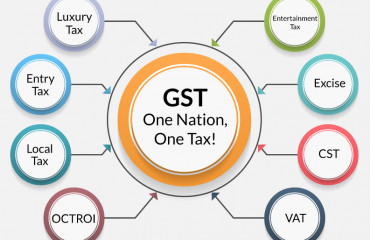
At the inception of GST, the availment of ITC was envisaged as a
two-way communication whereby the supplier would upload the
supply invoice details on the common portal and the recipient, on
a real-time basis, would accept/reject the same.
At the inception of GST, the availment of ITC was envisaged as a two-way communication whereby the supplier would upload the supply invoice details on the common portal and the recipient, on a real-time basis, would accept/reject the same.
The Goods and Services Tax (GST) was introduced in India with much fanfare in July 2017. It was expected that the Input Tax Credit (ITC) mechanism under the legislation would be robust, and credits would be fully fungible resulting in favourable cash flows. However, even after four years of its introduction, the journey of ITC has been bumpy and ridden with new restrictions each year, which has increased the compliance burden exponentially.
At the inception of GST, the availment of ITC was envisaged as a two-way communication whereby the supplier would upload the supply invoice details on the common portal and the recipient, on a realtime basis, would accept/reject the same. However, as the system functionalities were not in place, the two-way communication system could not be implemented. Further, the legislative provisions to formalise the two-way communication, i.e., Section 41, 42, 43 and 43A of the CGST Act is proposed to be omitted vide Finance Bill 2022 giving a go-bye to the ambitious 'credit-matching' concept.
It's apposite to analyse the major amendments made in the ITC provisions: Amendments to Rule 36(4) of the Central Goods and Services Tax Rules, 2017 (CGST Rules) [effective from Oct'19] Section 43A of the Central Goods & Services Tax Act, 2017 (CGST Act) provides for the procedure of availing ITC in a prescribed manner. Rule 36(4) restricted the total credit to 120%/110 %/105% (as amended from time to time) of the credits matched with GSTR-2A Before the insertion of Rule 36(4), the taxpayers used to avail the entire eligible input credit based on their invoices and GSTR-2A was only a facilitation measure, which did not impact the ability of the taxpayer to avail ITC on a self-assessment basis The validity of Rule 36(4) was under challenge because the said condition is imposed through Rules which travel beyond the CGST/SGST Act. Further, Rule 36(4) imposes an onerous and impossible burden on the buyer to somehow ensure that the supplier uploads the details of outward supplies on the common portal, failure of which leads to risks of ITC disallowance
Amendment to Section 16(2)(aa) of the CGST Act read with Rule 36(4) of the CGST Rules [effective from Jan'22] Section 16(2)(aa) read with amended Rule 36(4) provides that ITC shall be not be availed unless the details of invoices have been communicated in Form GSTR-2B The availment of ITC in GSTR-2B continues to be plagued by certain ambiguity which remains unaddressed as on date. While the invoices are reflected in the GSTR-2B for a month, ITC is not eligible to the recipient due to non-fulfilment of certain other conditions specified in Section 16 of the CGST Act viz. goods in transit not received by the buyer, invoice not received by the buyer, etc.
Proposed Amendment in Section 16(2)(ba) read with Section 38 of the CGST Act [introduced in Finance Bill 2022] It is imperative to note that the list of restrictions, on availment of ITC, enumerated under Section 38 is on account of default by the suppliers viz. non-compliance with registration provisions, supplier default in payment of tax, excess ITC availment, etc. Imposition of such restrictions on the recipient for the non-compliance of supplier is onerous on the recipient, who has no recourse or control over the supplier; these conditions appear to be retrograde, arbitrary, and irrational and run counter to a robust value-added tax legislation.
Amendments proposed in Section 49 of the CGST Act read with Rule 86B of the CGST Rules [Amendment in Section 49 - introduced in Finance Bill 2022; Rule 86B effective from Jan'21] Rule 86B of the CGST Rules restricts the use of ITC for payment of output liability. The validity of Rule 86B is under challenge before the Gujarat High Court. While the matter is sub-judice, the Finance Bill 2022 seeks to amend section 49 of the CGST Act, to empower the Government to restrict utilisation of electronic credit ledger for payment of output tax liability. The above enabling provision defeats the objective of seamless utilisation of eligible credit. The accumulation of ITC and payment in cash to discharge tax liability will be a double whammy to taxpayers.
The imposition of restrictions on the availment and utilisation of ITC appears to have been made with an intent to curb fake invoicing and boost revenue. However, frequent law amendments and imposition of new restrictions will adversely impact taxpayers especially the MSME and small taxpayers who neither have the resources nor automated tax compliance tools. Stringent, complex and arbitrary conditions in ITC dilutes 'ease of doing business'.
It is expected that the Government may take a pragmatic approach while enacting the budget proposals and remove onerous compliances and avoidable restrictions on ITC and aim for a balance between facilitation and enforcement, which would aid in better compliance and removal of uncertainty for honest taxpayers.
